Tadalix 10mg Tablet


MRP ₹90
(Inclusive of all Taxes)
₹13.5 Cashback (15%)
Provide Delivery Location
Online payment accepted
 Prescription drug
Prescription drugWhats That
Composition :
Manufacturer/Marketer :
Consume Type :
Return Policy :
About Tadalix 10mg Tablet
Tadalix 10mg Tablet belongs to the group of medicines called phosphodiesterase type 5 (PDE 5) inhibitors, primarily used to treat erectile dysfunction (impotence) and benign prostatic hyperplasia (BPH). Sometimes, Tadalix 10mg Tablet is also used to treat pulmonary arterial hypertension (high blood pressure in the lungs). Erectile dysfunction is the inability to keep a hard and erect penis suitable for sexual activity. Benign prostatic hyperplasia, also called as prostate enlargement, is the non-cancerous growth of the prostate gland.
Tadalix 10mg Tablet contains ‘Tadalafil’, which works by relaxing the blood vessels in the penis; this allows the blood to flow into the penis when the person is sexually excited. Thereby, it helps to treat erectile dysfunction. Tadalix 10mg Tablet relaxes the bladder and prostate muscles, thereby reducing enlarged prostate symptoms such as difficulty in urination and urgent need to urinate. Tadalix 10mg Tablet used to treat pulmonary hypertension (high blood pressure in the lungs) by relaxing the blood vessels in the chest. Thereby increasing the blood supply to the lungs and decreasing the workload of the heart.
You are advised to take Tadalix 10mg Tablet for as long as your doctor has prescribed it for you, depending on your medical condition. In some cases, you may experience certain common side-effects such as headache, back pain, muscle pain, pain in the legs and arms, nasal congestion, indigestion, and facial flushing. Most of these side-effects do not require medical attention and will resolve gradually over time. However, you are advised to talk to your doctor if you experience these side-effects persistently.
Do not take Tadalix 10mg Tablet if you are taking nitrates (used to treat angina), riociguat (used to treat pulmonary hypertension) or alpha-blockers; if you have heart problems or stroke, low blood pressure or uncontrolled high blood pressure. Tadalix 10mg Tablet is not intended for use in women. Tadalix 10mg Tablet may cause dizziness, so drive with caution. Avoid consuming alcohol as it might cause increased dizziness. Tadalix 10mg Tablet should not be given to children as safety and effectiveness have not been established. Keep your doctor informed about your health condition and the medicines you are taking to avoid unpleasant side-effects.
Uses of Tadalix 10mg Tablet
Directions for Use
Medicinal Benefits
Tadalix 10mg Tablet belongs to the group of medicines called phosphodiesterase type 5 (PDE 5) inhibitors. Tadalix 10mg Tablet is used to treat erectile dysfunction (impotence) and benign prostatic hyperplasia (BPH). Sometimes, Tadalix 10mg Tablet is also used to treat pulmonary arterial hypertension (high blood pressure in the lungs). Tadalix 10mg Tablet works by relaxing the blood vessels in the penis; this allows the blood to flow into the penis when the person is sexually excited. Thereby, it helps to treat erectile dysfunction. Tadalix 10mg Tablet relaxes the bladder and prostate muscles, thereby reducing enlarged prostate symptoms such as difficulty in urination and urgent need to urinate. Tadalix 10mg Tablet used to treat pulmonary hypertension (high blood pressure in the lungs) by relaxing the blood vessels in the chest. Thereby, increasing the blood supply to the lungs and decreasing the workload of the heart.
Storage
- Take medications with food (if recommended): It can help prevent stomach distress and indigestion.
- Eat smaller, more frequent meals: Divide daily food intake into smaller, more frequent meals to ease digestion.
- Avoid trigger foods: Identify and avoid foods that trigger indigestion, such as spicy, fatty, or acidic foods.
- Stay upright after eating: Sit or stand upright for at least 1-2 hours after eating to prevent stomach acid from flowing into the oesophagus.
- Avoid carbonated drinks: Avoid drinking carbonated beverages, such as soda or beer, which can worsen indigestion.
- Manage stress: To alleviate indigestion, engage in stress-reducing activities like deep breathing exercises or meditation.
- Consult a doctor if needed: If indigestion worsens or persists, consult a healthcare professional to adjust the medication regimen or explore alternative treatments.
- Drink water or other clear fluids.
- To prevent worsening of pain, limit intake of tea, coffee, or alcohol.
- Include bland foods like rice, toast, crackers, and rice in your diet.
- Avoid lying down immediately after eating as it may cause indigestion or heartburn.
- Avoid acidic and spicy food as it may cause indigestion.
- Consult your doctor if you experience skin redness, itching, or irritation after taking medication.
- Your doctor may adjust your treatment plan by changing your medication or providing guidance on managing your erythema symptoms.
- Your doctor may recommend or prescribe certain medications to help alleviate symptoms.
- Apply cool compresses or calamine lotion to the affected skin area to reduce redness and itching.
- Stay hydrated by drinking plenty of water to help alleviate symptoms and keep your skin hydrated.
- Monitor your skin condition closely and promptly report any changes, worsening symptoms, or concerns to your healthcare provider.
- Take medications with food (if recommended): It can help prevent stomach distress and indigestion.
- Eat smaller, more frequent meals: Divide daily food intake into smaller, more frequent meals to ease digestion.
- Avoid trigger foods: Identify and avoid foods that trigger indigestion, such as spicy, fatty, or acidic foods.
- Stay upright after eating: Sit or stand upright for at least 1-2 hours after eating to prevent stomach acid from flowing into the oesophagus.
- Avoid carbonated drinks: Avoid drinking carbonated beverages, such as soda or beer, which can worsen indigestion.
- Manage stress: To alleviate indigestion, engage in stress-reducing activities like deep breathing exercises or meditation.
- Consult a doctor if needed: If indigestion worsens or persists, consult a healthcare professional to adjust the medication regimen or explore alternative treatments.
- Inform your doctor about the nausea and discuss possible alternatives to the medication or adjustments to the dosage.
- Divide your daily food intake into smaller, more frequent meals to reduce nausea.
- Opt for bland, easily digestible foods like crackers, toast, plain rice, bananas, and applesauce.
- Avoid certain foods that can trigger nausea, such as fatty, greasy, spicy, and smelly foods.
- Drink plenty of fluids, such as water, clear broth, or electrolyte-rich beverages like coconut water or sports drinks.
- Use ginger (tea, ale, or candies) to help relieve nausea.
- Get adequate rest and also avoid strenuous activities that can worsen nausea.
- Talk to your doctor about taking anti-nausea medication if your nausea is severe.
- Record when your nausea occurs, what triggers it, and what provides relief to help you identify patterns and manage your symptoms more effectively.
Drug Warnings
Do not take Tadalix 10mg Tablet if you are allergic to any of its contents; if you are taking nitrates (used to treat angina), riociguat (used to treat pulmonary hypertension) or alpha-blockers; if you have heart problems or stroke, low blood pressure or uncontrolled high blood pressure, if you ever had a loss of vision. Inform your doctor if you have sickle cell anaemia (abnormal red blood cells), multiple myeloma (cancer of bone marrow), leukaemia (blood cell cancer), deformation in the penis, severe kidney or liver problems. Consult your doctor immediately if you experience loss of vision or hearing while taking Tadalix 10mg Tablet. Tadalix 10mg Tablet may cause dizziness, so drive with caution. Avoid consuming alcohol as it might cause increased dizziness. Tadalix 10mg Tablet should not be given to children as safety and effectiveness have not been established.
Drug-Drug Interactions
Drug-Drug Interactions
Login/Sign Up
Taking Tadalix 10mg Tablet with Riociguat may increase the risk or severity of lower the blood pressure.
How to manage the interaction:
Taking Riociguat with Tadalix 10mg Tablet is generally not recommended as it can lead to an interaction, but it can be taken together if prescribed by a doctor. However, if you experience dizziness, headache, and nasal congestion consult a doctor. Do not discontinue any medications without consulting a doctor.
Taking Tadalix 10mg Tablet with Nitroprusside can increase the risk or severity of low blood pressure.
How to manage the interaction:
Taking Tadalix 10mg Tablet with Nitroprusside is generally avoided as it can lead to an interaction, but it can be taken if prescribed by a doctor. If you experience dizziness, or heart palpitations, seek immediate medical attention. Do not discontinue any medications without consulting a doctor.
Coadministration of Tadalix 10mg Tablet with Isosorbide mononitrate can increase the risk or severity of low blood pressure.
How to manage the interaction:
Taking Isosorbide mononitrate with Tadalix 10mg Tablet is not recommended, but it can be taken together if prescribed by a doctor. However, consult a doctor if you experience dizziness, or heart palpitations. Do not discontinue any medications without consulting a doctor.
Taking Tadalix 10mg Tablet with Amyl Nitrite can increase the risk or severity of low blood pressure.
How to manage the interaction:
Taking Tadalix 10mg Tablet with Amyl nitrite is generally avoided as it can lead to interaction. They can be taken only when advised by a doctor. Seek immediate medical attention if you experience symptoms like dizziness, or heart palpitations. Do not discontinue any medications without consulting a doctor.
Taking Tadalix 10mg Tablet with Isosorbide dinitrate can increase the risk or severity of low blood pressure.
How to manage the interaction:
Taking Isosorbide dinitrate with Tadalix 10mg Tablet is not recommended, but it can be taken together if prescribed by a doctor. However, consult a doctor if you experience dizziness, or heart palpitations. Do not discontinue any medications without consulting a doctor.
Coadministration of Tadalix 10mg Tablet and Sildenafil may increase the risk of developing low blood pressure.
How to manage the interaction:
Coadministration of Tadalix 10mg Tablet and Sildenafil can lead to an interaction, but it can be taken if a doctor advises. However, if you experience dizziness, headache, heart palpitations consult a doctor immediately. Do not stop using any medications without a doctor's advice.
Coadministration of Miconazole with Tadalix 10mg Tablet may increase blood levels and effects of Tadalix 10mg Tablet. This can increase the risk or severity of side effects.
How to manage the interaction:
Although there is a possible interaction between miconazole and Tadalix 10mg Tablet, you can take these medicines together if prescribed by a doctor. However, consult a doctor immediately if you experience shortness of breath, dizziness, visual disturbances, or irregular heartbeat. Do not stop using medications without a doctor's advice.
Using Tadalix 10mg Tablet together with avanafil increases the risk or severity of low blood pressure.
How to manage the interaction:
Although there is a possible interaction between Tadalix 10mg Tablet and Avanafil, you can take these medicines together if prescribed by a doctor. If you experience dizziness, or heart palpitations call a doctor. Do not stop using any medications without a doctor's advice.
Coadministration of Tadalix 10mg Tablet with Ceritinib may significantly increase the blood levels and effects of Tadalix 10mg Tablet.
How to manage the interaction:
Although taking Tadalix 10mg Tablet with Ceritinib together can cause an interaction, it can be taken if a doctor has suggested it. If you notice trouble breathing, problems with your eyesight, trouble hearing, chest pain, a fast or irregular heartbeat. Do not discontinue any medications without consulting a doctor.
Coadministration of Ketoconazole with Tadalix 10mg Tablet may increase the blood levels and effects of Tadalix 10mg Tablet. This can increase the risk or severity of side effects.
How to manage the interaction:
Although taking Ketoconazole and Tadalix 10mg Tablet together can result in an interaction, it can be taken if a doctor has prescribed it. However, if your condition worsens or you experience any symptoms like chest pain or tightness, irregular heartbeat, shortness of breath, consult a doctor. Do not stop using any medications without a doctor's advice.
Drug-Food Interactions
Drug-Food Interactions
Login/Sign Up
Grapefruit Juice
How to manage the interaction:
Drinking large amounts of grapefruit juice with Tadalix 10mg Tablet may increase the blood levels and effects of Tadalix 10mg Tablet. Avoid or limit drinking grapefruit juice while being treated with Tadalix 10mg Tablet.
Diet & Lifestyle Advise
Erectile dysfunction:
- Maintaining a healthy weight, eating a balanced diet, and regular exercising may help you manage erectile dysfunction.
- Avoid alcohol consumption as it may temporarily impair your ability to get an erection.
- Avoid the usage of tobacco.
- Share intimate time with your partner.
- Stay sexually active to prevent further problems with erectile dysfunction.
Benign prostatic hyperplasia (BPH):
- Avoid foods like sugars, carbonated beverages, tea, citrus fruits, tomatoes, spicy foods, chocolate and tea.
- Limit fluid intake as excess fluid intake could cause an urge to urinate frequently.
- Avoid drinking excess alcohol or caffeinated drinks as they can worsen the symptoms.
- Maintain a healthy weight, and exercise regularly.
- Quit smoking.
- Take 6-8glasses or liquids every day.
- Avoid processed foods. Instead, choose whole, unprocessed foods.
- Include fruits, vegetables, and fibre-rich food in your diet.
Side Effects of Tadalix 10mg Tablet
- Headache
- Back pain
- Muscle pain
- Pain in legs and arms
- Nasal congestion
- Indigestion
- Facial flushing
Habit Forming
Therapeutic Class
Product Substitutes
Author Details
We provide you with authentic, trustworthy and relevant information
Drug-Diseases Interactions
Drug-Diseases Interactions
Login/Sign Up
FAQs
Tadalix 10mg Tablet works by relaxing the blood vessels in the penis, thereby allows the blood flow into the penis when the person is sexually excited.
Tadalix 10mg Tablet relaxes the muscles in the bladder and prostate, thereby reduces the symptoms of benign prostatic hyperplasia (BPH) or enlarged prostate such as difficulty in urination and urgent need to urinate.
In some cases, Tadalix 10mg Tablet is used to treat pulmonary arterial hypertension (high blood pressure in the lungs) by relaxing the chest's blood vessels. Thereby, increasing the blood supply to the lungs and decreasing the workload of the heart.
No, do not take Tadalix 10mg Tablet with nitrates. Taking Tadalix 10mg Tablet with medicines used to treat angina/chest pain, such as nitrates/nitroglycerin, may cause severe lowering of blood pressure. You are advised not to take Tadalix 10mg Tablet if you are taking nitrates or have a history of heart attack/stroke.
No, Tadalix 10mg Tablet should not be taken along with blood-pressure-lowering medicines. Tadalix 10mg Tablet relaxes and widens the blood vessels; this causes a decrease in blood pressure. Therefore, if Tadalix 10mg Tablet is taken with blood pressure lowering medicines, it could lead to a lowering of blood pressure.
Drug-Drug Interactions Checker List
- AMLODIPINE
- LISINOPRIL
- LOSARTAN
- METOPROLOL
- RIOCIGAUT
- NITROGLYCERIN
- KETOCONAZOLE
- ITRACONAZOLE
- ERYTHROMYCIN
- CLARITHROMYCIN
- RIFAMPICIN
- PHENOBARBITAL
- PHENYTOIN
- CARBAMAZEPINE
- RITONAVIR
Special Advise
- Take Tadalix 10mg Tablet 30 minutes to 4 hours before sexual intercourse. However, it is best to take it an hour before sexual activity.
- Do not take Tadalix 10mg Tablet more than once a day. Take Tadalix 10mg Tablet as prescribed by the doctor.
- Talk to your doctor if the erection persists for greater than four hours.
Disease/Condition Glossary
Erectile dysfunction: It is the inability to keep a hard and erect penis suitable for sexual intercourse. It could be a sign of physical or psychological conditions such as fear of sexual failure, anxiety, depression, low self-esteem, or stress. Certain health-related factors such as smoking, drinking, being overweight, being physically inactive, and high blood pressure also contribute to erectile dysfunction. Symptoms of erectile dysfunction include difficulty in getting an erection, difficulty in maintaining the erection during intercourse and decreased sexual desire.
Benign prostatic hyperplasia (BPH): Benign prostatic hyperplasia, also called prostate enlargement, is the non-cancerous growth of the prostate gland due to the multiplication of cells. This leads to swelling and squeezing of the urethra and limits the urine flow. It is an age-associated prostate gland enlargement which can cause problems with urination. BPH symptoms include loss of bladder control, frequent urination, inability to urinate, incomplete bladder emptying, weak urinary stream, dribbling at the end of the urinary stream, sudden urge to urinate, and painful urination.
Pulmonary arterial hypertension (PAH): High blood pressure affects the arteries in the lungs and heart, leading to pulmonary arterial hypertension. It occurs due to narrowed or blocked blood vessels which increases the workload on the heart. Symptoms include chest pain, dizziness, fatigue, and swelling in the legs and ankles.

Have a query?
Alcohol
Unsafe
You are advised not to consume alcohol while taking Tadalix 10mg Tablet as it may cause increased dizziness.
Pregnancy
Unsafe
Tadalix 10mg Tablet is not recommended for use in pregnancy.
Breast Feeding
Unsafe
Tadalix 10mg Tablet is not recommended for use during breastfeeding.
Driving
Caution
Tadalix 10mg Tablet may cause dizziness. Therefore you are advised to drive and operate machinery only if you are alert.
Liver
Caution
Dose adjustment may be needed. Please consult your doctor before taking Tadalix 10mg Tablet if you have liver impairment/liver disease or any concerns regarding this.
Kidney
Caution
Dose adjustment may be needed. Please consult your doctor before taking Tadalix 10mg Tablet if you have kidney impairment/kidney disease or any concerns regarding this.
Children
Unsafe
Tadalix 10mg Tablet should not be given to children as the safety and effectiveness have not been established.





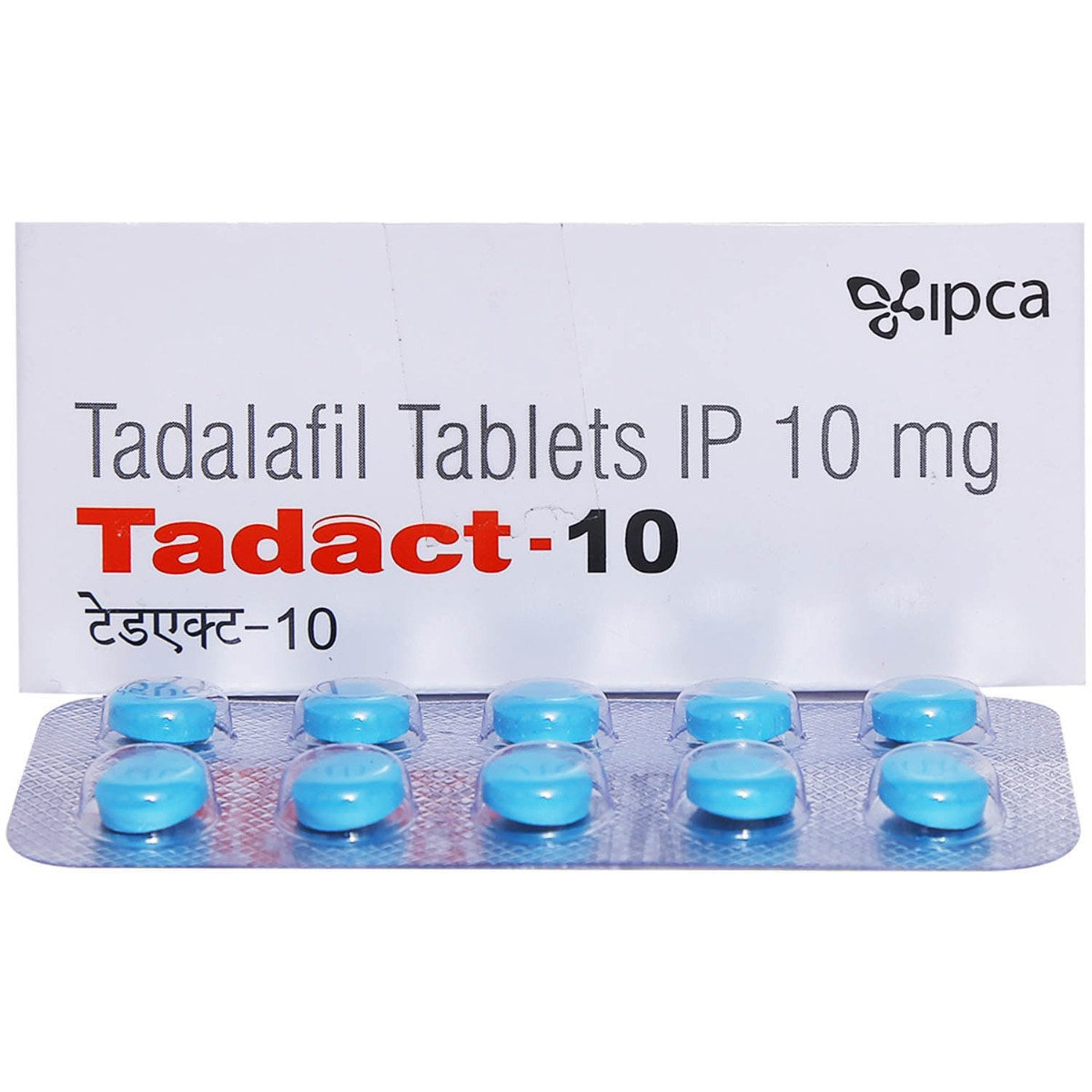
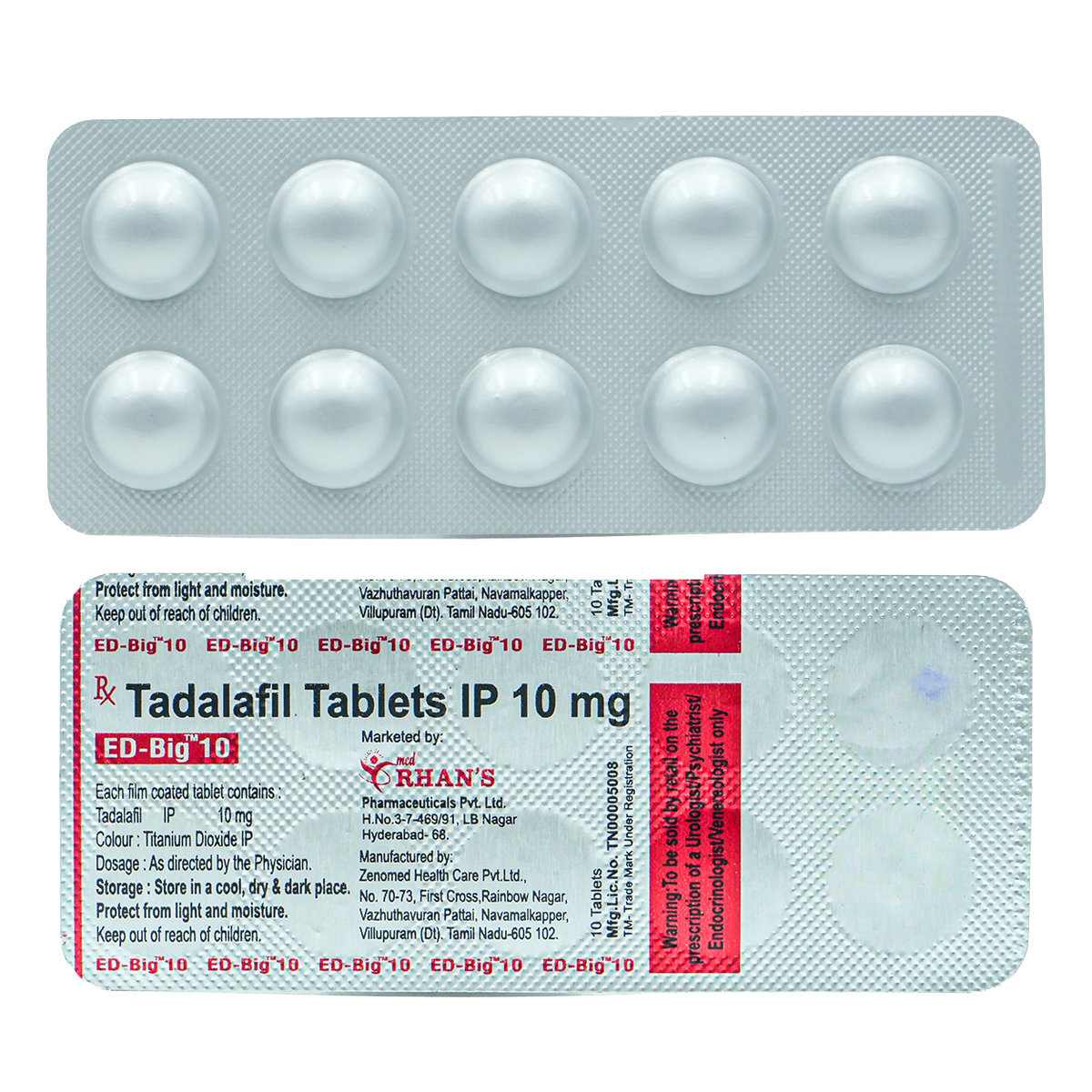

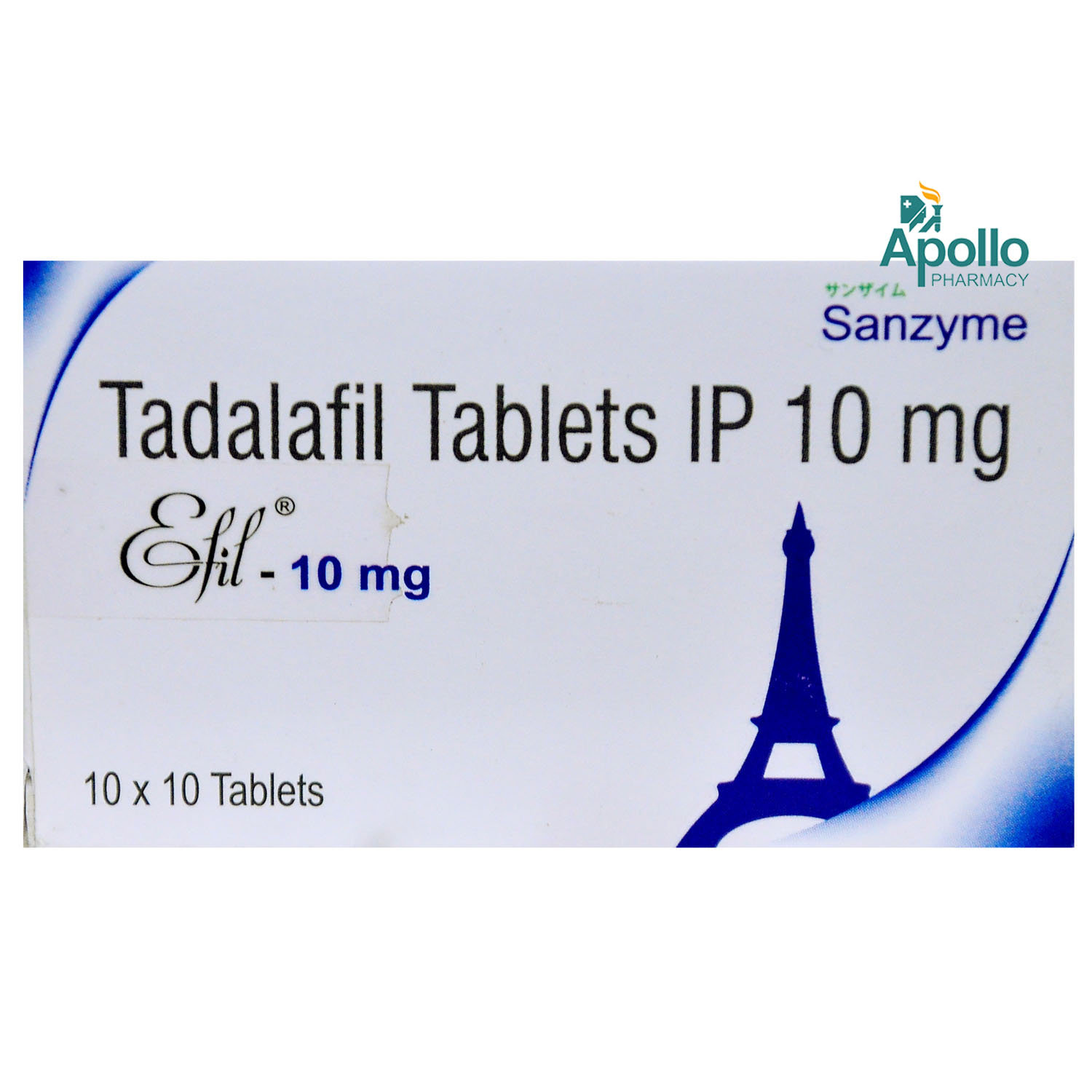
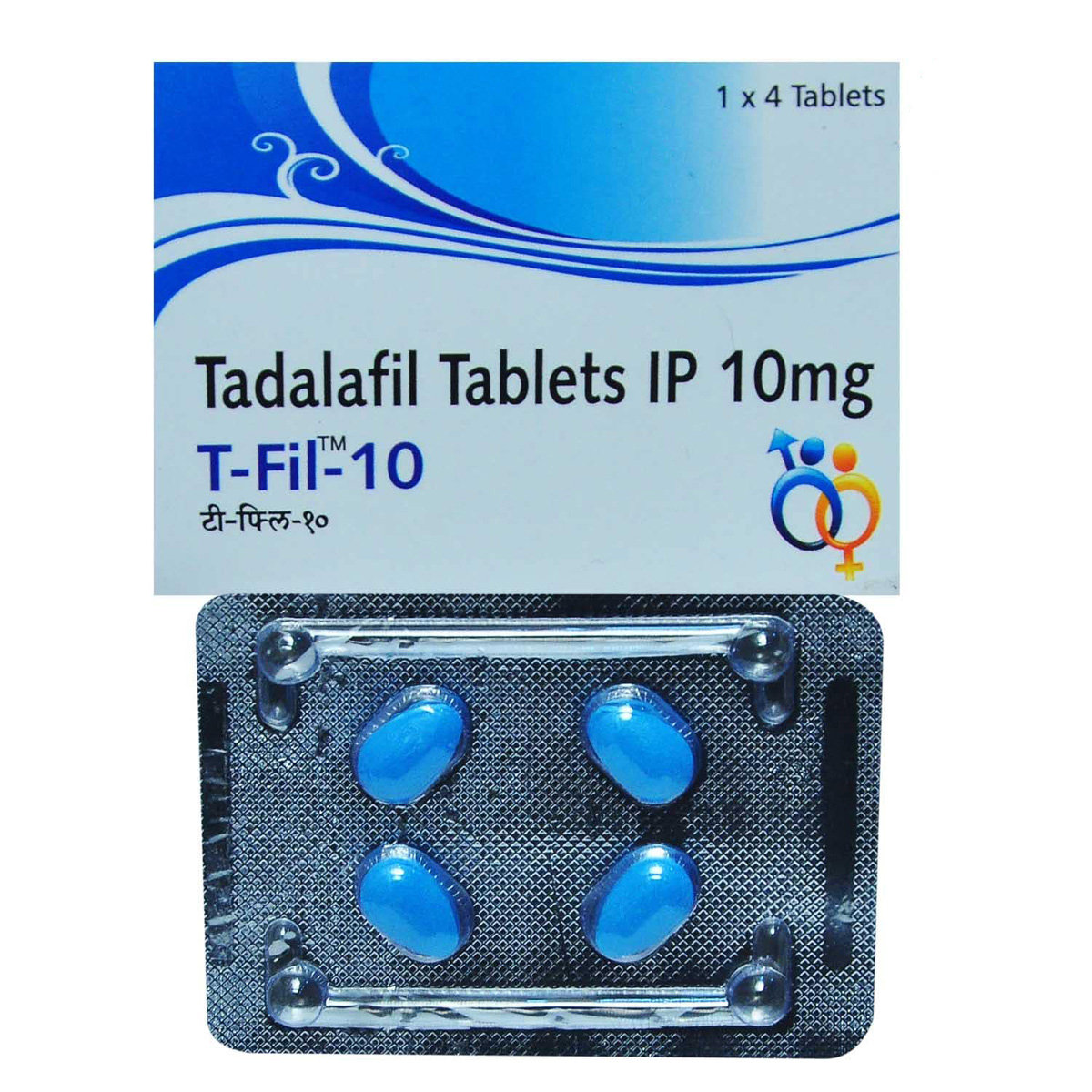
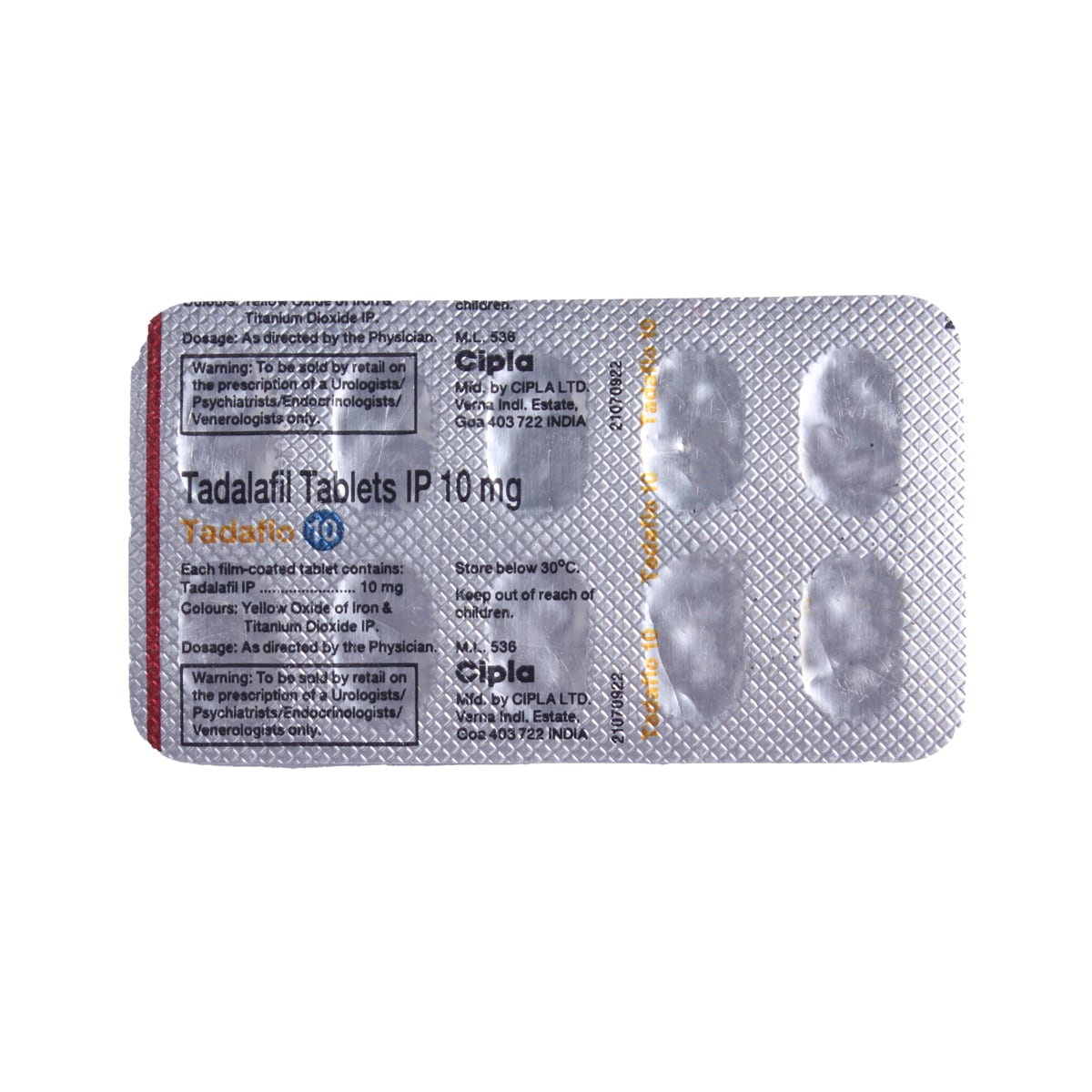
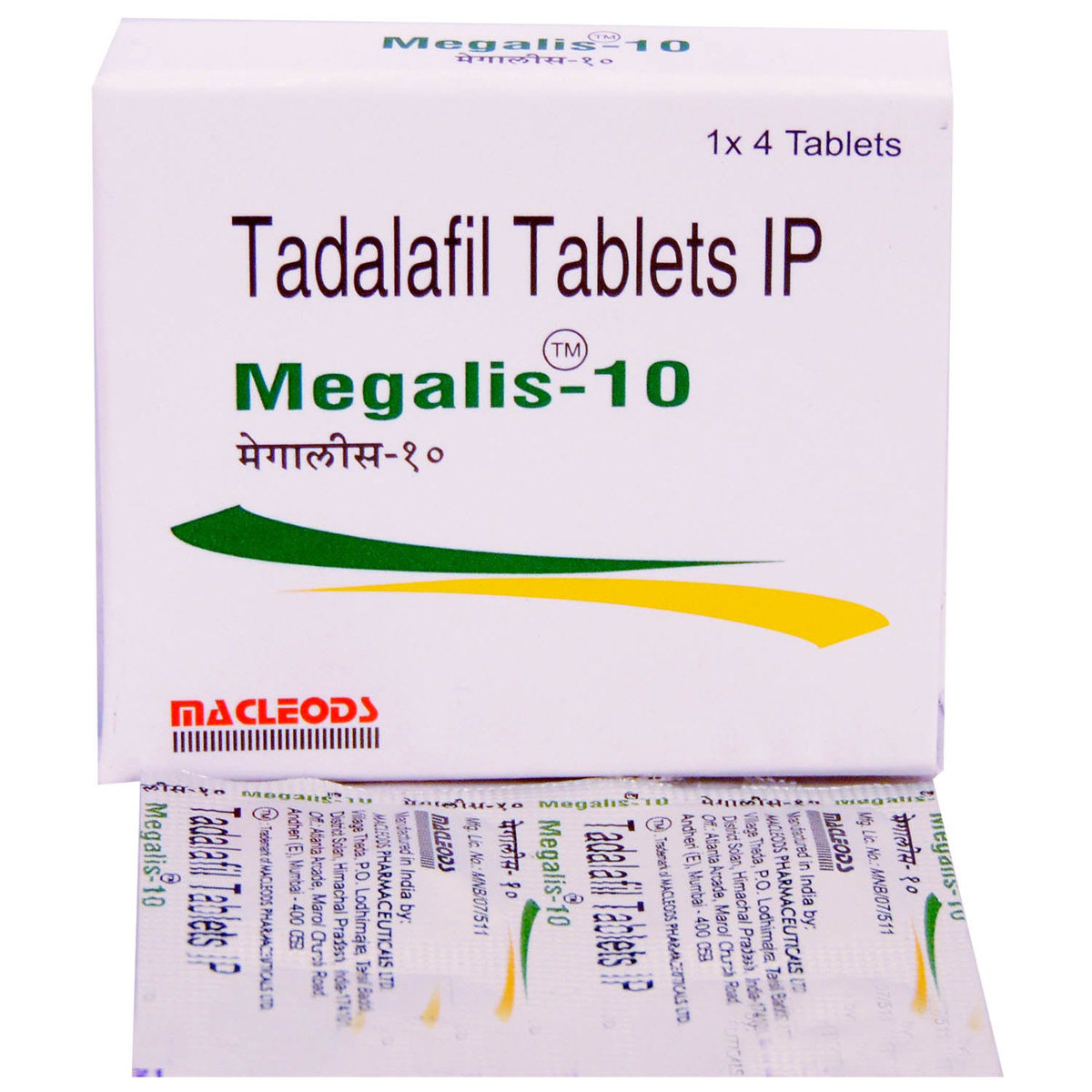
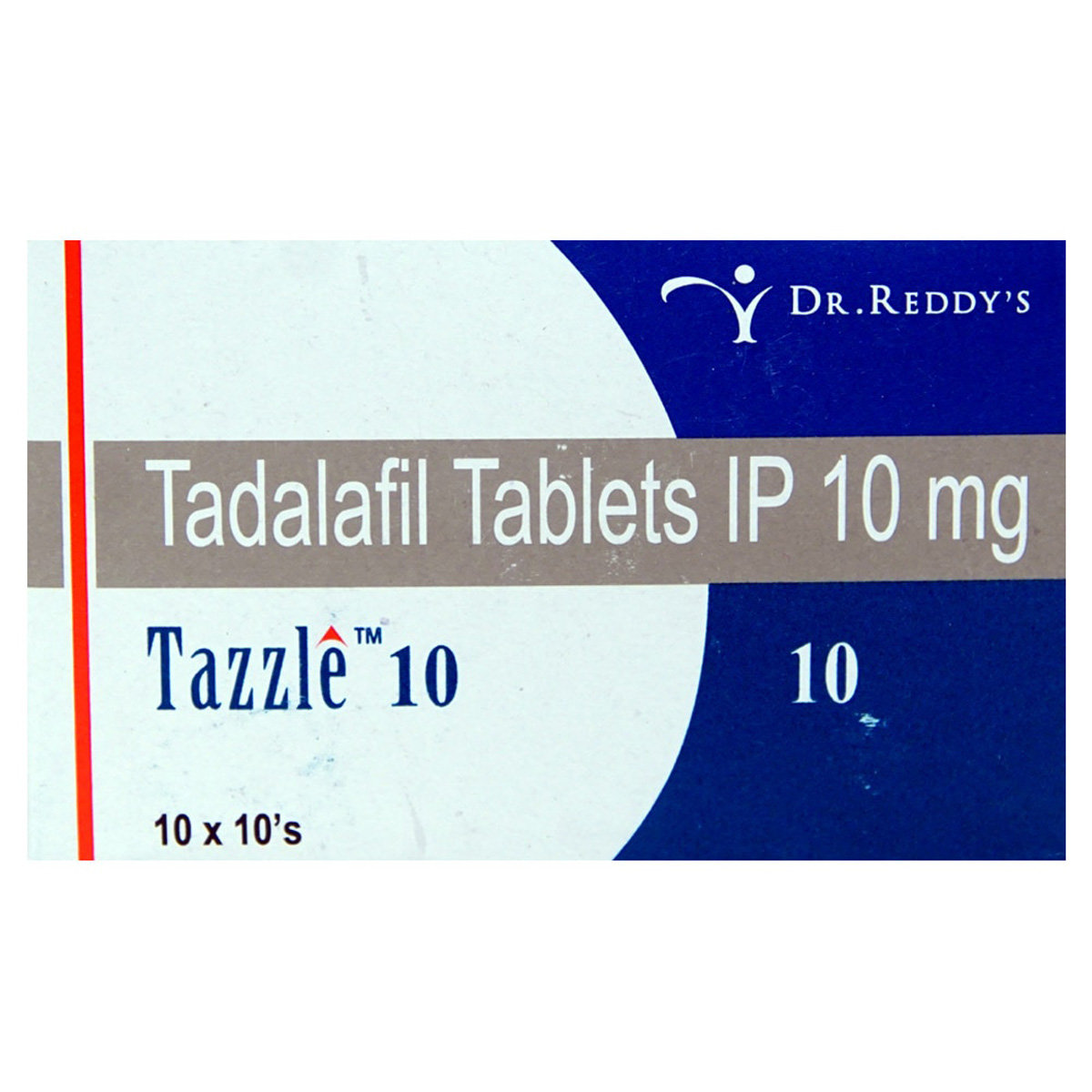
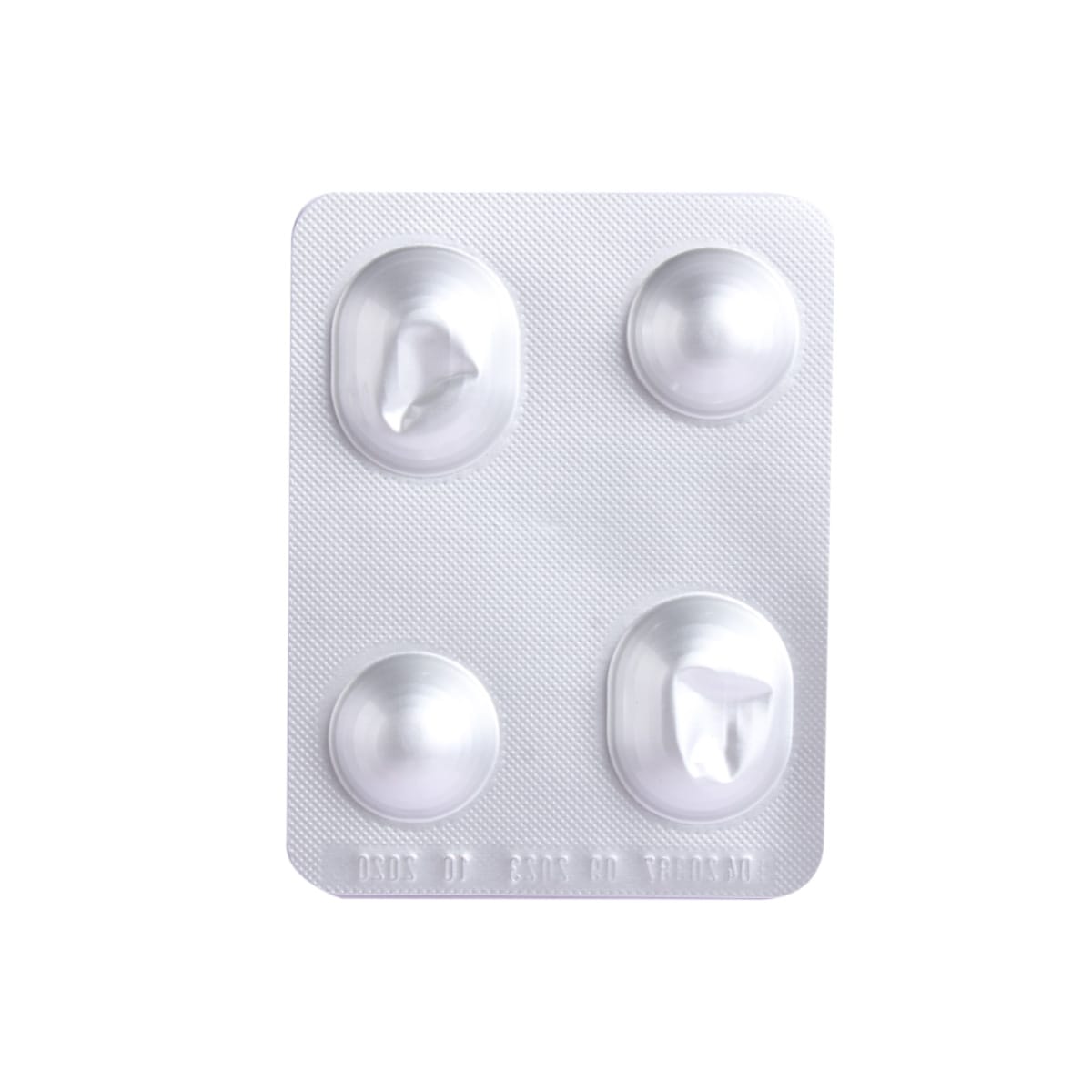

_0.jpg?tr=q-85)

